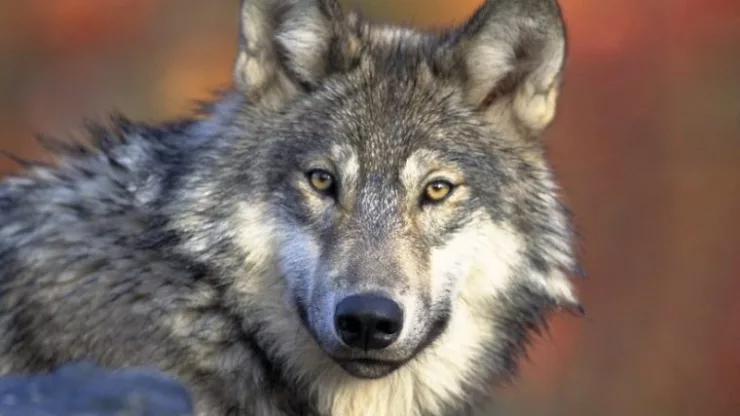Did you know that dogs have been human’s best friend for over 15,000 years? It’s true!
Scientists believe that wolves, which are the ancestors of dogs, began interacting with humans thousands of years ago.
Fascinated by these majestic creatures, humans began to domesticate and breed them, leading to the vast array of dog breeds we have today.
Dogs come in all shapes, sizes, and colors. From the tiny Chihuahua to the majestic Great Dane, each breed has its unique traits and characteristics.
In this article, we’ll explore some fun and informative facts about dogs and their incredible diversity.
- Dogs are descendants of wolves.
- The largest dog breed in the world is the English Mastiff, and the smallest is the Chihuahua.
- Dogs have about 100 different facial expressions, and most of them involve their ears.
- A dog’s nose print is unique, just like a human’s fingerprint.
- Dogs can see in the dark, and their sense of smell is 1,000 times stronger than humans.
- The oldest recorded dog lived to be 29 years old.
- Dogs are capable of understanding up to 250 words and gestures.
- The Basenji breed of dog is the only one that cannot bark.
- Dogs are great swimmers, but they can get tired and drown, just like humans.
- The fastest dog breed is the Greyhound, which can run up to 45 miles per hour.
- Dogs have three eyelids, one of which is called the nictitating membrane. It helps keep their eyes moist and protected.
- The term “dog days” comes from the ancient Greeks and Romans, who believed that the star Sirius, also known as the “dog star,” was responsible for hot weather.
- Dogs don’t sweat like humans do. They regulate their body temperature by panting.
- The first dog to ever go to space was a Russian dog named Laika.
- Dogs are social animals and thrive on companionship. They can suffer from separation anxiety if left alone for too long.
An Ancestral Connection: Dogs and Wolves
Have you ever noticed a resemblance between your pet dog and a wild wolf? That’s not a coincidence.
Genetic studies suggest that dogs share a common ancestor with wolves, and that domestic dogs diverged from wolves anywhere between 20,000 to 40,000 years ago.
Humans likely first came into contact with wolves as they began to form settlements.
Some wolves were tamed, and over generations, these animals evolved into a more docile species – the Canis familiaris, or the domestic dog, as we know it today.
Some Fun Facts About Dogs and Wolves
- The Most Wolf-Like Dog : The Siberian Husky and Alaskan Malamute are the most closely related breeds to the extinct Taimyr wolf – their last common ancestor.
- Dog vs. Wolf DNA : Domestic dogs and wolves share 99.9% of their mitochondrial DNA. That’s quite a family resemblance!
- Wolves in Disguise : The Czechoslovakian Wolfdog and the Saarloos Wolfdog are two dog breeds that were specifically bred to look like wolves. Despite their wild appearance, they have the temperament of a domestic dog.
Education About Dogs
Understanding your dog’s needs, behaviors and training can lead to a harmonious life together.
A well-informed owner can better comprehend their dog’s actions and reactions, and provide for their health and happiness.
Here are some key aspects to consider:
- Breed Specific Traits: Dogs of different breeds have different needs and tendencies. For instance, Border Collies have high energy and may require more physical and mental stimulation than a Basset Hound.
- Training: Positive reinforcement training methods are the most effective and humane approach. Remember, patience and consistency are key!
- Healthcare: Regular check-ups, vaccinations, and good nutrition are essential to keep your dog healthy. Also, understand the common health issues of your dog’s breed.
- Socialization: Exposing puppies to a variety of people, animals, environments, and sounds can help them grow into well-rounded adults.
In conclusion, dogs are not only our best friends but also fascinating creatures with diverse breeds, interesting ancestry, and unique needs.
As we continue to learn more about them, our bond only grows stronger.
FAQs
Are dogs color blind?
No, dogs are not color blind. They can see colors, but their range of colors is limited compared to humans.
What is the most popular dog breed in the world?
The most popular dog breed in the world is the Labrador Retriever.
Can dogs get sunburned?
Yes, dogs can get sunburned, especially those with light skin and short hair.
Do dogs dream?
Yes, dogs dream just like humans do. You might notice them twitching or making noises while they sleep.
How do dogs communicate with each other?
Dogs communicate with each other through body language, vocalizations, and scent markings.
How often should I bathe my dog?
It depends on the breed and their activity level. Generally, dogs should be bathed every three months or as needed.
Can dogs get depressed?
Yes, dogs can get depressed, especially if they are left alone for long periods or have experienced trauma.
What is the average lifespan of a dog?
The average lifespan of a dog is 10-13 years, although some breeds can live longer.
Can dogs get colds?
No, dogs cannot catch colds from humans. However, they can get respiratory infections from other dogs.
How much exercise does my dog need?
It depends on the breed and their age. Generally, dogs need at least 30 minutes to an hour of exercise per day.
What is the smartest dog breed?
The smartest dog breed is the Border Collie, followed by the Poodle and the German Shepherd.
Can dogs eat chocolate?
No, dogs should never eat chocolate. It contains a compound called theobromine, which is toxic to dogs.

I am a fun fact enthusiast and creator of Facts On Tap.
I love to share my knowledge and curiosity with readers and inspire them to learn something new every day.
When I’m not writing, I enjoy traveling, reading, and playing trivia games with my friends.




